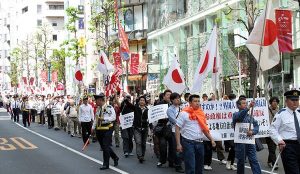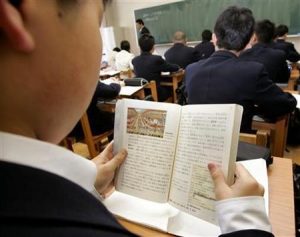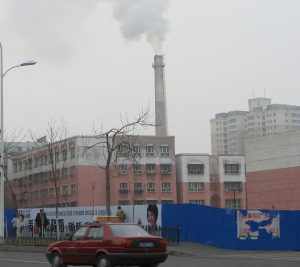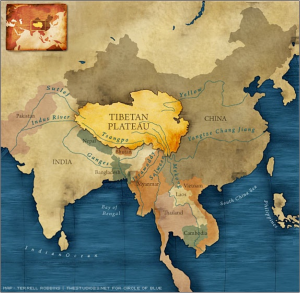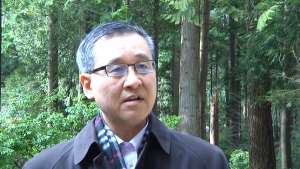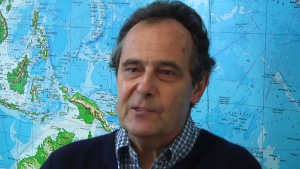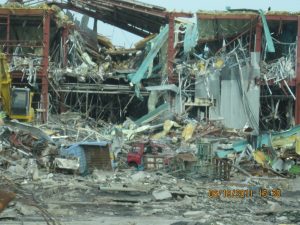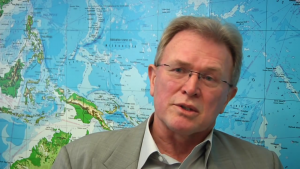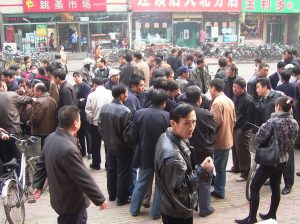Alzheimer’s Disease Research in China and Canada (Video Interview with Dr. Weihong Song)
Memo #147 – Alzheimer’s disease affects ten per cent of people over 65 years old, and 50 per cent of people over 85. Both China and Canada are experiencing a rapidly aging population. In China, there are 178 million people over 60.
Japan’s Failure to Enfranchise its Permanent Resident Foreigners
Memo #145 – Over 500,000 Koreans, many who were born and raised in Japan, have become disheartened since Japan’s historic change of government in 2009. In March 2010, the Japanese government failed to submit the long-awaited bill to give voting rights to permanent resident foreigners. Enfranchisement is a major political issue in Japan and the political rights of permanent resident foreigners are ignored.
Japanese History Textbook Controversies: The Missing Link
Memo #144 – History textbook controversies in Japan (教科書問題) focus on “facts” about particular events and question specific phrasing and numbers. In the past, Chinese and South Korean governments have charged that Japanese government-screened history textbooks allegedly trivialized and/or justified past atrocities.
Relocating China’s Pollutive Industries: a “Double Pollution” Problem
Memo #143 – Newspaper headlines in China have been speckled with the painful legacies of industrial land contamination. The term “brownfield” is used by post-industrial countries to describe land contaminated by previous industrial use. It is increasingly applied to cases in China. But the context is different, as China still experiences rapid growth. This separates China’s “brownfield” dynamic (constant land use change), from post-industrial countries’ static issues of derelict land.
Water, Scarcity, and Tibetan Plateau Frontiers
Memo #142 Theme Editors: Tashi Tsering and Jack Hayes Freshwater (in)security is quickly rising as a critical global challenge. Today, March 22, is World Water Day. The focus is freshwater and measures for conservation and management. Last fall, Asia Pacific Memo published four Memos as part of its Theme, “Water, Scarcity, and Tibetan Plateau Frontiers.” […]
China: Energy, Environment, and Growth – Options for Canada (Video Interview with Dr. Wenran Jiang)
Memo 140 – China’s environmental issues need to be understood in a global rather than a narrowly national context. While China as a nation is the largest emitter of carbon dioxide on a per capita basis Chinese citizens produce far fewer emissions than citizens in advanced industrial economies. Further a large proportion of these emissions result from export industries producing goods for export abroad.
Japan’s Soma City One Year after the Disaster (Video Interview with Dr. David W. Edgington)
Memo #138 – Dr. David Edgington has conducted research on Soma City, Japan, since last year’s earthquake, tsunami, and nuclear disaster. Soma City, one of many devastated communities, is a remote agriculture and fishing village along the coast and is a part of the Fukushima prefecture.
Social Networks and Japan’s 3/11 Disaster
Memo #137 – Social networks matter. They help us find jobs. They influence whether or not we vote and if we gain weight or get buff. Long before last year’s nuclear disaster in Japan, electric power utilities worked with the central government to place atomic power plants in villages along the coast with weaker social networks.
Comparing Chinese and Indian Media Industries (Video Interview with Hugh Stephens) (Part 1/2)
Memo #136 – Hugh Stephens, Executive-in-Residence at the Asia Pacific Foundation of Canada, has over 35 years of government and business experience in the Asia region. In this interview, he compares the Chinese and Indian media industries.
Why do Chinese Migrants Have to Pay so Much to Work Overseas?
Memo #135 – Unskilled workers from China have to pay exorbitant costs to work abroad in Japan, Singapore, and South Korea, their top three choices. Fees, averaging 8,000 USD, are not charged by human smugglers but licensed employment intermediaries. In fact, transnational labour migration through legal channels costs significantly more than illegal migration. This is not unique to China. Across Asia, the percentage of legal migrants is increasing – more than 800,000 Chinese by the end of 2011 compared to less than 60,000 in 1990. Why is the cost increasing? Because Asian states rely on intermediaries.

